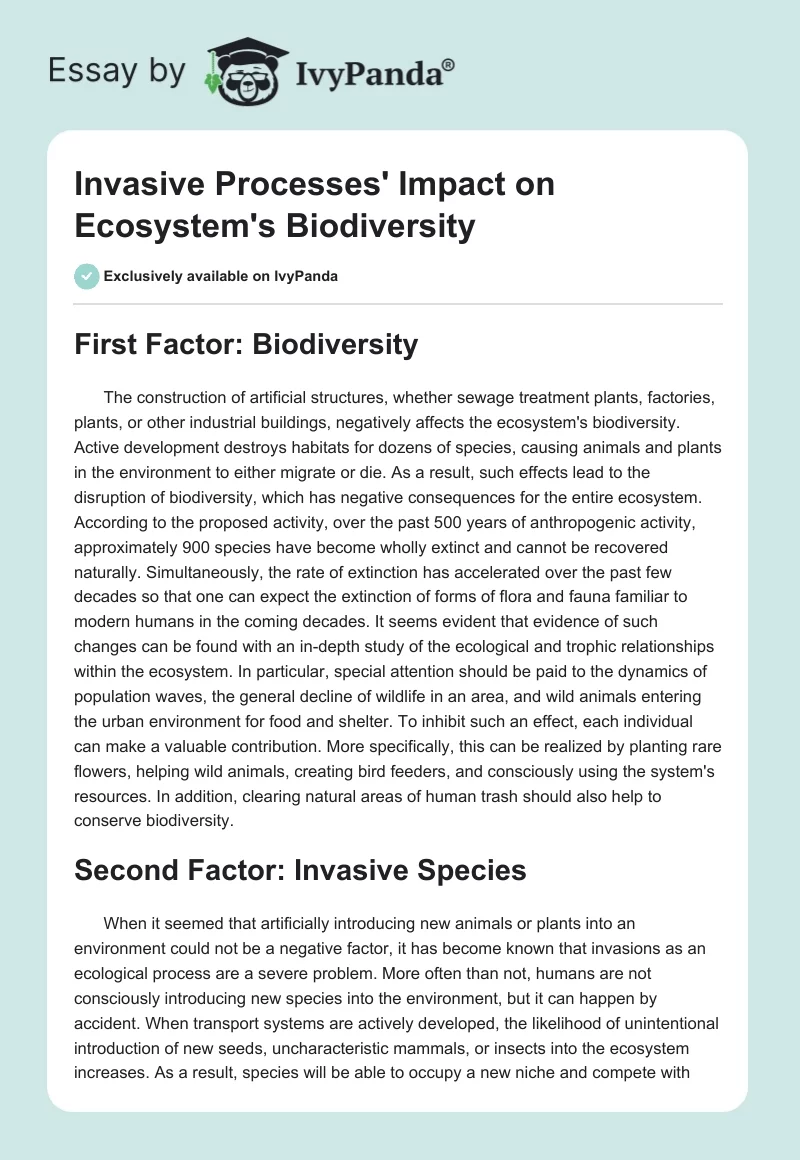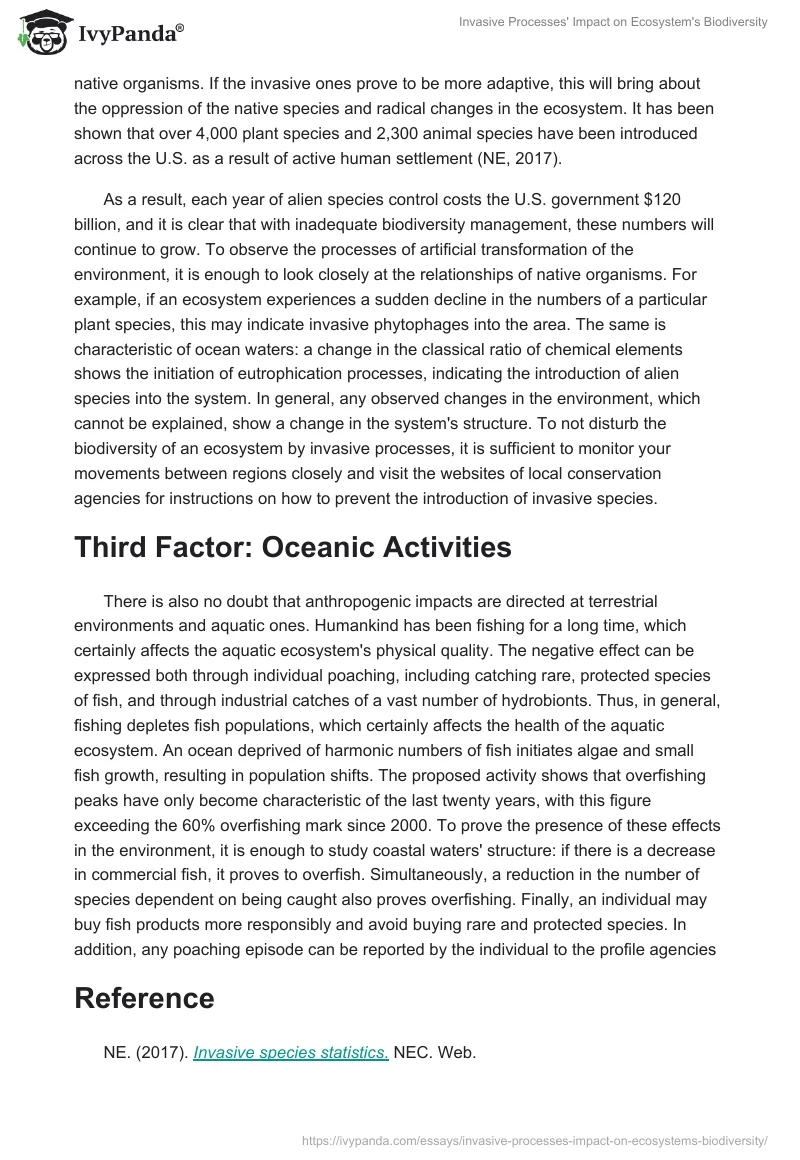First Factor: Biodiversity
The construction of artificial structures, whether sewage treatment plants, factories, plants, or other industrial buildings, negatively affects the ecosystem’s biodiversity. Active development destroys habitats for dozens of species, causing animals and plants in the environment to either migrate or die. As a result, such effects lead to the disruption of biodiversity, which has negative consequences for the entire ecosystem. According to the proposed activity, over the past 500 years of anthropogenic activity, approximately 900 species have become wholly extinct and cannot be recovered naturally.
Simultaneously, the rate of extinction has accelerated over the past few decades so that one can expect the extinction of forms of flora and fauna familiar to modern humans in the coming decades. It seems evident that evidence of such changes can be found with an in-depth study of the ecological and trophic relationships within the ecosystem. In particular, special attention should be paid to the dynamics of population waves, the general decline of wildlife in an area, and wild animals entering the urban environment for food and shelter. To inhibit such an effect, each individual can make a valuable contribution. More specifically, this can be realized by planting rare flowers, helping wild animals, creating bird feeders, and consciously using the system’s resources. In addition, clearing natural areas of human trash should also help to conserve biodiversity.
Second Factor: Invasive Species
When it seemed that artificially introducing new animals or plants into an environment could not be a negative factor, it has become known that invasions as an ecological process are a severe problem. More often than not, humans are not consciously introducing new species into the environment, but it can happen by accident. When transport systems are actively developed, the likelihood of unintentional introduction of new seeds, uncharacteristic mammals, or insects into the ecosystem increases. As a result, species will be able to occupy a new niche and compete with native organisms. If the invasive ones prove to be more adaptive, this will bring about the oppression of the native species and radical changes in the ecosystem. It has been shown that over 4,000 plant species and 2,300 animal species have been introduced across the U.S. as a result of active human settlement (NE, 2017).
As a result, each year of alien species control costs the U.S. government $120 billion, and it is clear that with inadequate biodiversity management, these numbers will continue to grow. To observe the processes of artificial transformation of the environment, it is enough to look closely at the relationships of native organisms. For example, if an ecosystem experiences a sudden decline in the numbers of a particular plant species, this may indicate invasive phytophages into the area.
The same is characteristic of ocean waters: a change in the classical ratio of chemical elements shows the initiation of eutrophication processes, indicating the introduction of alien species into the system. In general, any observed changes in the environment, which cannot be explained, show a change in the system’s structure. To not disturb the biodiversity of an ecosystem by invasive processes, it is sufficient to monitor your movements between regions closely and visit the websites of local conservation agencies for instructions on how to prevent the introduction of invasive species.
Third Factor: Oceanic Activities
There is also no doubt that anthropogenic impacts are directed at terrestrial environments and aquatic ones. Humankind has been fishing for a long time, which certainly affects the aquatic ecosystem’s physical quality. The negative effect can be expressed both through individual poaching, including catching rare, protected species of fish, and through industrial catches of a vast number of hydrobionts. Thus, in general, fishing depletes fish populations, which certainly affects the health of the aquatic ecosystem. An ocean deprived of harmonic numbers of fish initiates algae and small fish growth, resulting in population shifts.
The proposed activity shows that overfishing peaks have only become characteristic of the last twenty years, with this figure exceeding the 60% overfishing mark since 2000. To prove the presence of these effects in the environment, it is enough to study coastal waters’ structure: if there is a decrease in commercial fish, it proves to overfish. Simultaneously, a reduction in the number of species dependent on being caught also proves overfishing. Finally, an individual may buy fish products more responsibly and avoid buying rare and protected species. In addition, any poaching episode can be reported by the individual to the profile agencies
Reference
NE. (2017). Invasive species statistics. NEC. Web.


